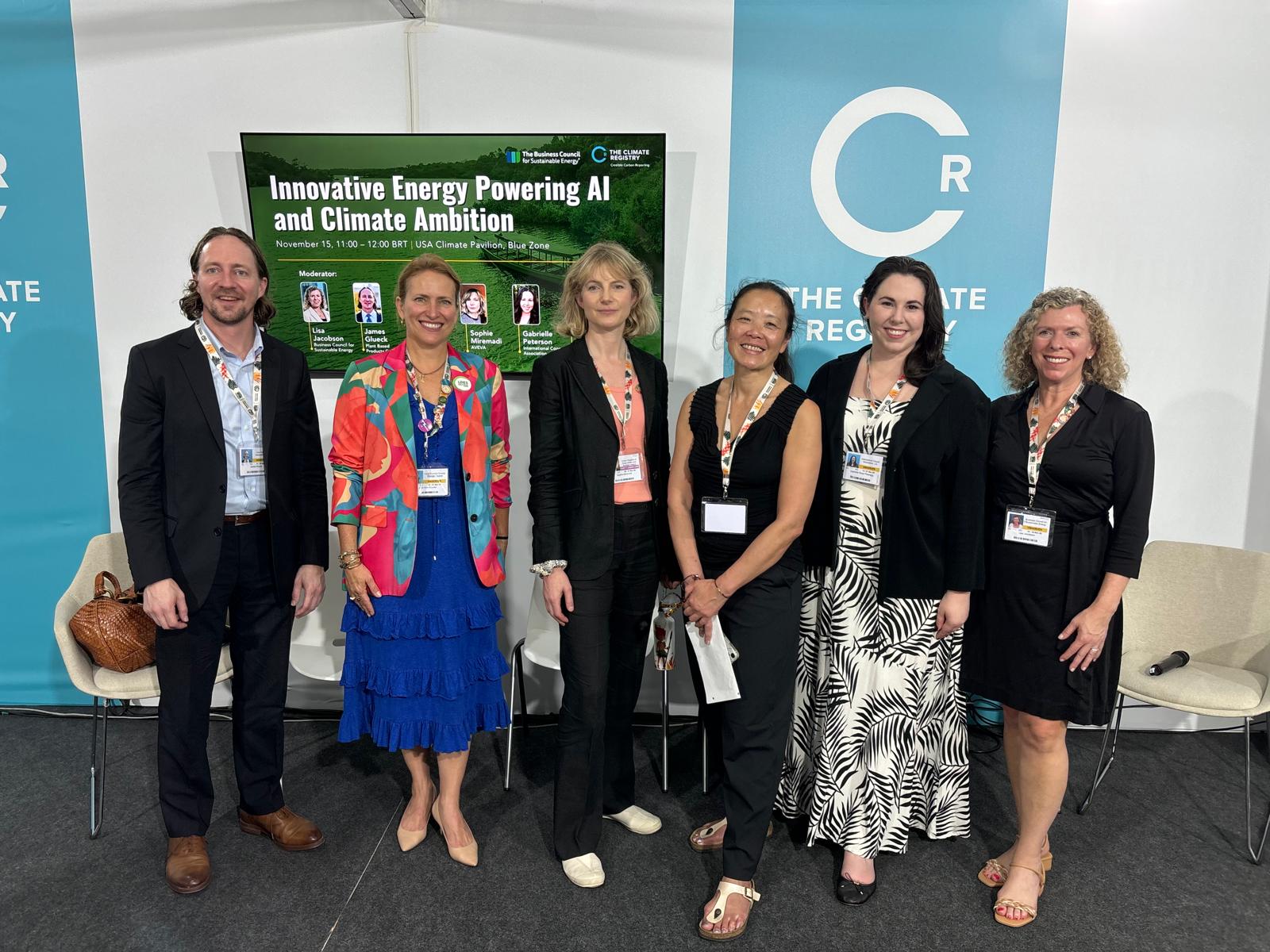U.S. clean tech executives discussed how they are working to align a complex matrix of priorities, including rising energy demand, energy affordability, economic development, and investment in climate action. Speakers explored how artificial intelligence can strengthen forecasting and grid management, accelerate the deployment of clean energy, and drive greater adoption of energy efficiency. The discussion also examined the role of public policy and the new forms of partnerships between government, industry, and communities needed to build the energy system of tomorrow.
Speakers included:
- James Glueck, Executive Director, Plant Based Products Council
- Sandy Grace, Vice President, U.S. Policy & Regulatory Strategy, National Grid
- Sophie Miremadi, Vice President, Global Government Affairs and Public Policy, AVEVA
- Gabrielle Peterson, Global Director, Content and Communications, International Copper Association
- Julia Souder, Chief Executive Officer, Long Duration Energy Storage Council
- Moderator: Lisa Jacobson, President, BCSE
Key takeaways:
Overall Themes
- AI’s growing impact on energy demand, industrial efficiency, and resource needs
- The importance of critical minerals (especially copper)
- The role of digitalization, data, and AI in improving industrial and grid efficiency
- Challenges around infrastructure planning, regulatory frameworks, data transparency, and adoption
International Copper Association
- Copper market focus: demand is rising, prices increasing, deployment continuing.
- Copper is essential as the “chief conductor,” widely used in electricity and electrical engineering.
- The clean energy transition is not possible without copper.
- AI must be viewed through the full energy and supply chain lens. It should improve sustainability and efficiency. AI is more than knowledge management; it has substantial manufacturing and production impacts.
- Data center expansion will significantly increase demand for copper through cooling, IT equipment, and power systems.
- Copper and other critical minerals are the lynchpin of the digital transition. They need clean, responsible supply, with strong environmental and worker-safety frameworks. They also need both mining and recycling, along with improved collection of end-of-life products. There are hopes for innovation in midstream and downstream domestic production.
- AI is increasingly used in mine production processes.
AVEVA
- AVEVA is a major software provider. It provides software for ~90% of large U.S. power utilities, plus ISOs and large industrial users like mining, shipping, and data centers.
- Digitalization and data-driven tools can boost efficiency and reduce industrial power demand. They help utilities plan grid and storage capacity, especially given AI’s water and energy impacts.
- AVEVA is working with chip manufacturers and data center developers on AI infrastructure efficiency.
- Data-driven approaches help optimize data center power usage. We need the ability to measure the net energy impact of AI.
- Challenges: digital maturity varies, and industrial data is often siloed, limiting AI’s value.
- Calls for an agreed-upon methodology to measure AI’s true net impact.
Plant Based Products Council
- Members use diverse feedstocks (e.g., agricultural waste), often in hard-to-abate and energy-intensive sectors—major opportunities for efficiency and circularity through AI.
- On the agriculture side, AI can accelerate R&D and help farmers optimize water and fertilizer.
- Ultimately, AI helps increase the use of sustainable resources across the entire value chain.
- Earthos in North America began as a bioplastics developer. AI accelerates their work.
- Companies are very mindful of energy use and impacts when choosing where to operate.
- Longevity matters—businesses plan over long time frames.
- Over 75% of consumers are familiar with and view these new sustainable products favorably.
National Grid
- National Grid operates electricity and transmission systems in the UK and Wales.
- Long-term system planning requires understanding how AI will shape future energy demand. Infrastructure lasts 40–50 years and takes a long time to build.
- National Grid’s utility venture capital arm invests in AI and grid-enhancing technologies:
- AI Dash: uses satellite imagery for vegetation management; reduced storm-related outages by 30%.
- LineVision: tower sensors that enable dynamic line ratings for smarter transmission use.
- Investments in superconductors.
- $100M commitment for AI startups, including Emerald AI, which helps data centers manage workflow.
- Regulatory frameworks are needed to help utilities scale new technologies.
- Large loads are emerging quickly across the system.
Long Duration Energy Storage Council
- How to ensure equal transparency and access to industry data?
- There is a global need for data center capacity, which will increase energy demand. This growth amplifies the need for storage. No single battery technology fits all applications; environmental safety is key.
Additional Cross-Cutting Points
- Many companies are thinking long-term about energy impacts, infrastructure, and sustainability.
- AI offers major opportunities but also major resource and energy implications.
- Need coordinated frameworks for:
- Measuring AI’s net energy and environmental impact
- Ensuring responsible supply chains
- Scaling new technologies
- Improving data visibility and interoperability
DETAILS

